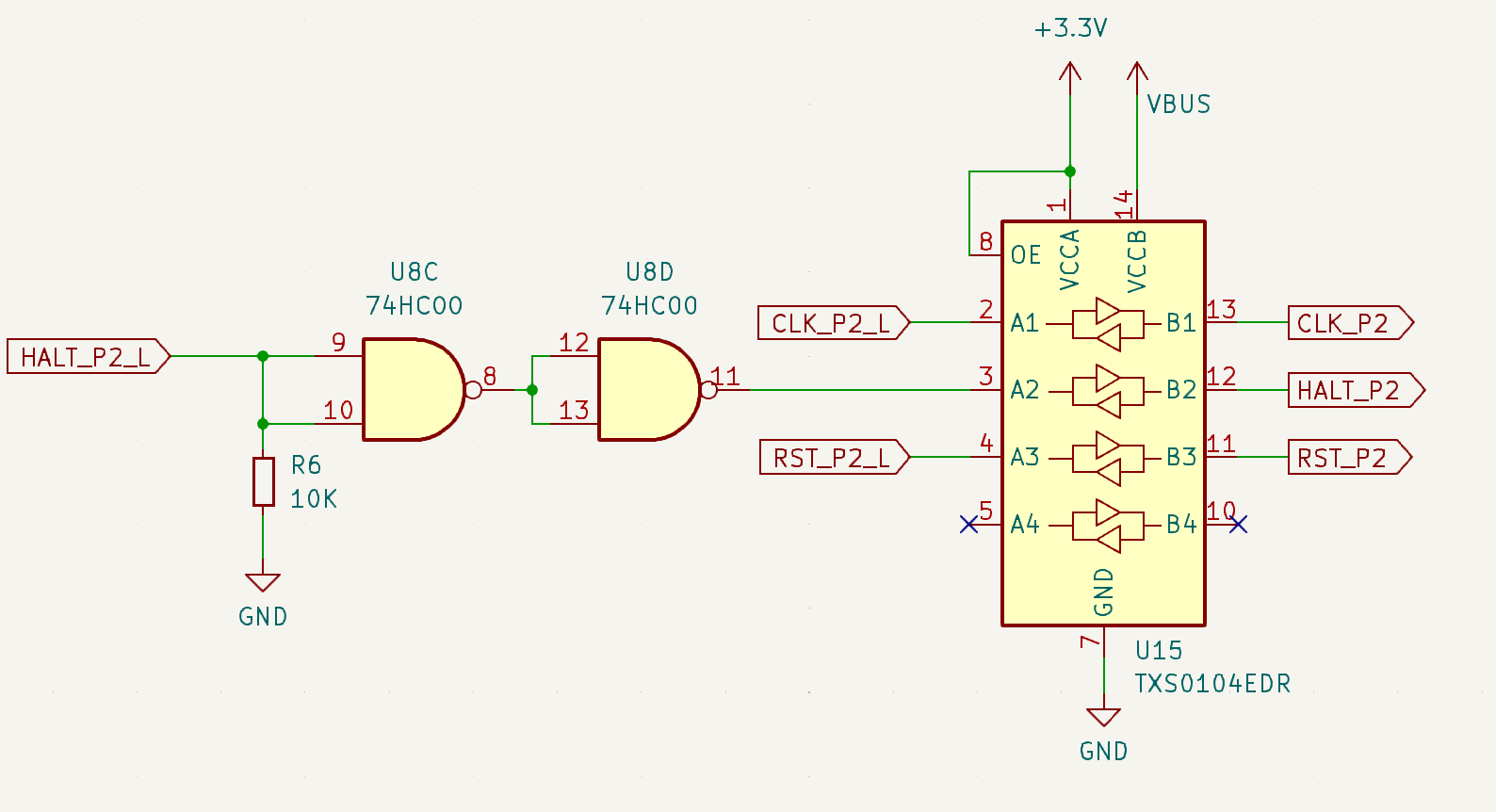I have a PCB that has a 3.3V MCU working with a 5V CPU. I am using the TXS0104B to level shift certain signals coming out of the MCU going to the CPU. I would also like my board to function properly if the MCU is not installed. Right now, the MCU must be on and pulling one of the critical outputs low for proper operation. I though that I could just simply add a 10K or 4.7K pull-down resistor to the output line of the MCU and this would allow the line to go low if the MCU was not installed. However, I do see a voltage on this pin when using the pull-down resistor. It is acting like there is another pull-up resistor in the circuit and I am doing voltage division rather than getting my pin to GND.
After further investigation my theory is that the TXS0104B is not allowing me to pull the pin to GND. I also have a TXB0401B in the lab and tried it out on a breadboard, and I seem to have the same issue in trying to pull-up an input to 3.3V using a resistor.
How can I solve this such that I get proper voltage shifting but also can use pull-up and down resistors as needed for default situations?
Here is the scenario that does not work. The signal HALT_P2_L can be driven by an MCU, or the MCU can be removed. I was thinking this would be the solution, but my testing and description above indicates otherwise.

I have two unused NAND gates so I am thinking that this will work.


